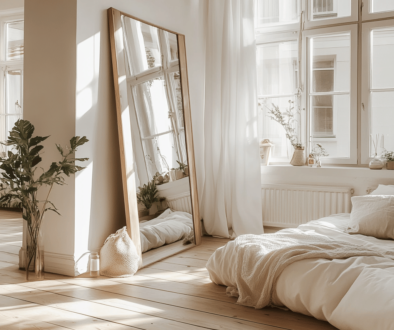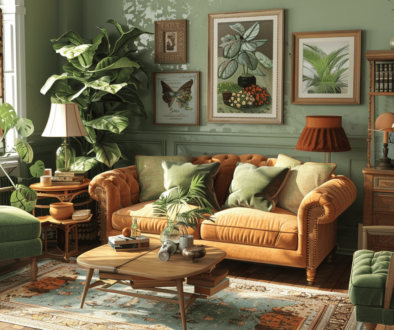How to Identify Quality Furniture: A Comprehensive Guide
Introduction
Investing in high-quality furniture can transform your home and ensure your pieces last for years. But how do you distinguish between well-crafted furniture and items that only look good on the surface? This guide will help you identify the signs of quality furniture, so you can make informed decisions and choose pieces that offer both beauty and durability. Whether you’re shopping for a new sofa, dining table, or bedroom set, these tips will help you recognize top-notch craftsmanship.
Why Quality Furniture Matters
Longevity
High-quality furniture is built to last. When you invest in well-made pieces, you save money in the long run because you won’t need to replace them as often. Good furniture can endure the test of time, maintaining its functionality and appearance for many years.
Aesthetic Appeal
Quality pieces enhance the look of your home. They often feature superior design and craftsmanship that make a statement and add elegance to your living space. High-end furniture can turn an ordinary room into an extraordinary one.
Comfort and Functionality
Superior materials and construction provide better comfort and usability. Quality furniture is not only about aesthetics; it’s also about how it feels and functions. Well-made sofas, chairs, and beds offer the support and comfort you need for a relaxing environment.
Sustainability
Investing in durable furniture reduces waste and supports sustainable practices. Instead of contributing to the throwaway culture, you’re making a choice that benefits the environment. High-quality pieces are often made with eco-friendly materials and practices, making them a greener option.
Value for Money
Quality furniture retains its value better than cheaper alternatives. If you ever decide to sell your furniture, high-end pieces can fetch a good price, making them a smart investment. They also tend to age well, gaining character and charm over time.
Materials Matter
The materials used in furniture significantly impact its quality. Here are some key materials to look for:
Solid Wood
Solid wood is a hallmark of high-quality furniture. Hardwoods like oak, maple, and walnut are especially desirable due to their durability and beauty.
Advantages of Solid Wood:
- Longevity and durability.
- Unique grain patterns that add to the aesthetic appeal.
- Easy to repair and refinish.
How to Identify Solid Wood Furniture:
- Check the weight; solid wood is heavier than particleboard or veneer.
- Look for visible grain patterns and joinery.
- Knock on the surface to hear a solid, deep sound rather than a hollow one.
High-Quality Fabrics
Choose durable, stain-resistant fabrics for upholstered furniture. High-quality fabrics not only look better but also last longer.
Types of Fabrics to Look For:
- Natural fibers like cotton, linen, and wool.
- High-performance synthetics like microfiber and Sunbrella.
Signs of High-Quality Upholstery:
- Tightly woven fabric with no visible gaps.
- Consistent color and pattern alignment.
- Cushions that retain their shape after use.
Metal and Hardware
Ensure metal parts are sturdy and rust-resistant. Quality hardware is essential for the functionality and longevity of furniture.
Types of Metal Used in Furniture:
- Stainless steel and brass for durability and resistance to rust.
- Aluminum for a lightweight but sturdy option.
Checking the Quality of Hardware:
- Look for smooth, well-finished surfaces.
- Test drawers and doors for smooth operation.
- Ensure all screws and fastenings are secure and well-aligned.
Construction Techniques
How furniture is constructed is a key indicator of its quality. Here are some techniques to look for:
Joinery
High-quality furniture features robust joinery methods like dovetail, mortise-and-tenon, and tongue-and-groove joints.
Why Joinery Matters:
- Provides strength and stability to the furniture.
- Indicates skilled craftsmanship.
Examples of Good Joinery:
- Dovetail joints in drawers, which interlock tightly without nails.
- Mortise-and-tenon joints in chair and table legs, offering exceptional strength.
Reinforcement
Check for corner blocks, braces, and screws. Reinforcement adds to the durability of the furniture, ensuring it can withstand daily use.
How Reinforcement Adds to Durability:
- Prevents joints from loosening over time.
- Adds structural integrity to heavy-use areas.
Signs of Reinforced Construction:
- Look underneath tables and chairs for corner blocks.
- Check for additional bracing in larger pieces like dressers and cabinets.
Finishing
Inspect the finish for evenness and smoothness. A quality finish protects the furniture and enhances its appearance.
Types of Finishes:
- Lacquer, varnish, and polyurethane for wood protection.
- Powder coating for metal parts.
What a Good Finish Looks Like:
- Smooth, even application without drips or bubbles.
- Enhanced natural beauty of the material.
- Protective layer that resists scratches and stains.
Attention to Detail
Quality furniture often stands out due to the attention to detail in its construction and finish.
Symmetry and Alignment
Check that parts are symmetrical and aligned. This not only looks better but also indicates careful craftsmanship.
Importance of Symmetry in Design:
- Enhances visual appeal.
- Reflects precision in manufacturing.
How to Spot Misalignment:
- Look at the furniture from different angles.
- Ensure all parts fit together seamlessly without gaps.
Consistency
Look for consistent patterns and colors. Quality furniture maintains uniformity in its design elements.
Why Consistency is a Sign of Quality:
- Indicates careful selection of materials.
- Reflects meticulous construction processes.
Examples of Consistent Craftsmanship:
- Fabric patterns that match across seams.
- Wood grain that flows naturally across the piece.
Smooth Edges and Surfaces
Ensure there are no rough edges or splinters. Smooth finishes are a hallmark of quality furniture.
Importance of Smooth Finishes:
- Enhances the look and feel of the furniture.
- Prevents accidental injuries from sharp edges.
How to Check for Smoothness:
- Run your hands over surfaces and edges.
- Look for uniformity in the finish.
Comfort and Ergonomics
High-quality furniture not only looks good but also feels good. Comfort and ergonomics are crucial aspects to consider.
Support and Cushioning
Test the furniture for comfort and support. Good cushioning materials and construction are essential for long-term comfort.
Types of Cushioning Materials:
- High-density foam for durability and support.
- Feather and down for a plush, luxurious feel.
Signs of Good Support:
- Cushions that bounce back after use.
- Even support across the entire seating area.
Proportions and Dimensions
Ensure the furniture fits your space and needs. Proper proportions and dimensions enhance both functionality and aesthetics.
How to Measure for the Right Fit:
- Measure your space and the furniture to ensure it will fit.
- Consider the scale of the piece relative to the room.
Importance of Proper Proportions:
- Ensures comfort and usability.
- Enhances the overall look of your space.
Brand Reputation and Reviews
Choosing furniture from reputable brands can help ensure quality.
Research Brands
Look for reputable brands known for quality. Trusted brands often have a history of producing durable, well-crafted furniture.
List of Trusted Furniture Brands:
- Stickley
- Ethan Allen
- Herman Miller
Importance of Brand Reputation:
- Indicates consistent quality and reliability.
- Provides assurance of good customer service and warranty.
Customer Reviews
Read reviews to gauge customer satisfaction. Reviews can offer insights into the real-world performance and durability of furniture.
What to Look for in Reviews:
- Comments on the quality and durability.
- Experiences with customer service and delivery.
How to Find Reliable Reviews:
- Use reputable websites like Consumer Reports and Trustpilot.
- Check for verified purchase reviews.
Certifications and Standards
Certifications and standards are indicators of quality and safety in furniture.
Eco-Friendly Certifications
Look for certifications like FSC and GREENGUARD. These certifications indicate environmentally friendly practices.
Importance of Eco-Friendly Furniture:
- Supports sustainable forestry and manufacturing practices.
- Reduces exposure to harmful chemicals.
Types of Certifications to Look For:
- FSC (Forest Stewardship Council) for sustainable wood.
- GREENGUARD for low emissions of volatile organic compounds (VOCs).
Quality Standards
Check for industry standards and certifications. These standards ensure the furniture meets certain quality and safety benchmarks.
Common Quality Standards in Furniture:
- ANSI/BIFMA standards for office furniture.
- CARB compliance for low formaldehyde emissions in wood products.
How to Verify Certifications:
- Look for certification labels or logos on the product.
- Verify the certification through the issuing organization’s website.
Conclusion
Identifying quality furniture involves paying attention to materials, construction techniques, and details that signify craftsmanship. By following these guidelines, you can invest in pieces that are not only beautiful but also durable and functional. Ready to find the perfect furniture for your home? Use these tips to make informed choices and enjoy the benefits of high-quality furnishings. Happy shopping!
Looking for more tips and tricks? Check out these articles.







How to Style Mismatched Furniture for a Cohesive Look
August 13, 2024 @ 1:25 am
[…] How to Identify Quality Furniture: A Comprehensive Guide […]
How to Find Discounted High-End Furniture in 2024
September 22, 2024 @ 6:47 pm
[…] How to Identify Quality Furniture: A Comprehensive Guide […]
Winter Home Decor Basics: Cozy Up Your Space
October 14, 2024 @ 1:47 pm
[…] How to Identify Quality Furniture: A Comprehensive Guide […]